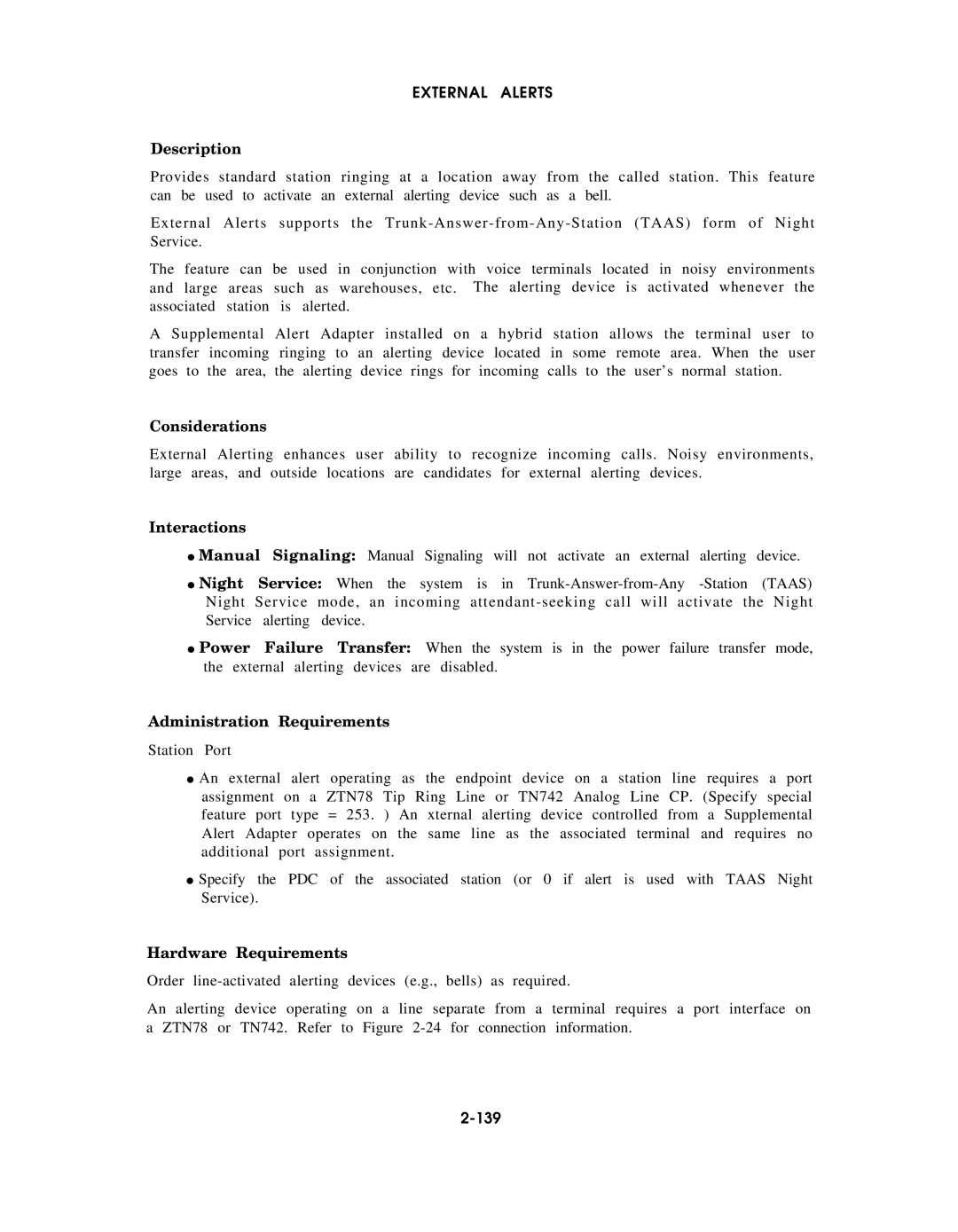EXTERNAL ALERTS
Description
Provides standard station ringing at a location away from the called station. This feature can be used to activate an external alerting device such as a bell.
External Alerts supports the
The feature can be used in conjunction with voice terminals located in noisy environments and large areas such as warehouses, etc. The alerting device is activated whenever the associated station is alerted.
A Supplemental Alert Adapter installed on a hybrid station allows the terminal user to transfer incoming ringing to an alerting device located in some remote area. When the user goes to the area, the alerting device rings for incoming calls to the user’s normal station.
Considerations
External Alerting enhances user ability to recognize incoming calls. Noisy environments, large areas, and outside locations are candidates for external alerting devices.
Interactions
● Manual Signaling: Manual Signaling will not activate an external alerting device.
●Night Service: When the system is in
●Power Failure Transfer: When the system is in the power failure transfer mode, the external alerting devices are disabled.
Administration Requirements
Station Port
●An external alert operating as the endpoint device on a station line requires a port assignment on a ZTN78 Tip Ring Line or TN742 Analog Line CP. (Specify special feature port type = 253. ) An xternal alerting device controlled from a Supplemental Alert Adapter operates on the same line as the associated terminal and requires no additional port assignment.
●Specify the PDC of the associated station (or 0 if alert is used with TAAS Night Service).
Hardware Requirements
Order
An alerting | device operating on a line separate from a | terminal requires a port interface on |
a ZTN78 or | TN742. Refer to Figure | information. |
